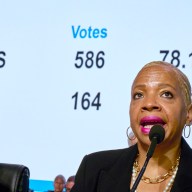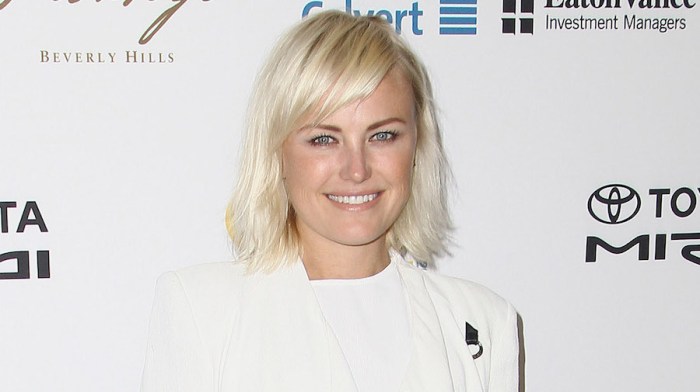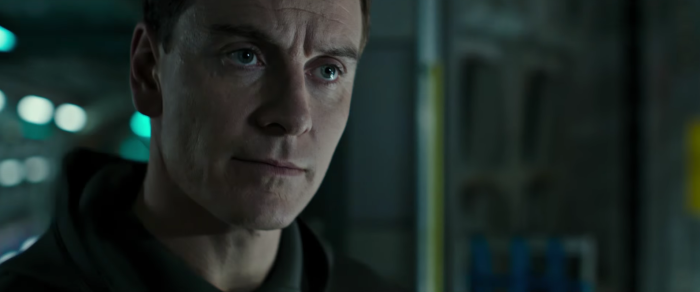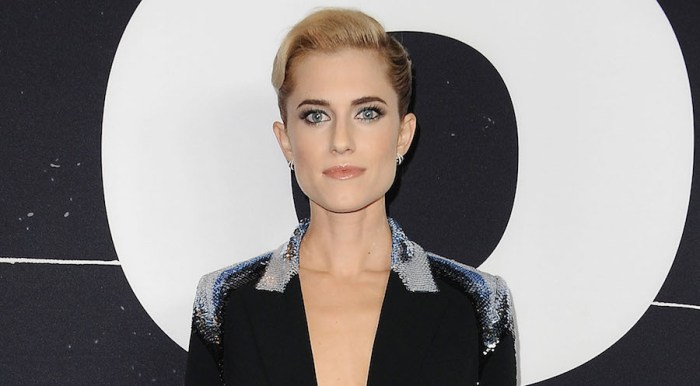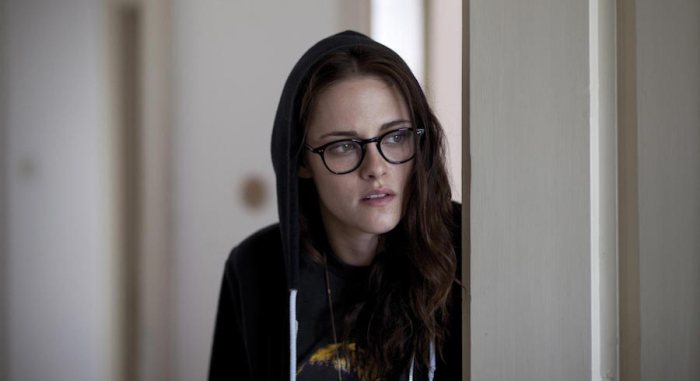‘Punch-Drunk Love’ Before we get to what a dazzling and loopy piece of craftsmanship “Punch-Drunk Love” is, a word — several of them — about a problem we don’t think Paul Thomas Anderson’s fourth feature has. If you were to strip the film down to pure plot, it might not sound like your typical Lonely Nice Guy movie. Adam Sandler plays a sensitive, shy single who’s coaxed out of his shell by a woman (Emily Watson) who loves him. This plot is always #problematic — a hashtag we don’t use sarcastically — the one where a female character exists solely to aid a sad, dateless male. There’s enough of them in cinema, and in real life. Were it made today, Sandler’s Barry Egan would be the guy who goes on social media to rant about how girls don’t really want to date nice guys, obliviously betraying that he only pretends to be nice to get laid. Because an actual nice guy wouldn’t think that. But again, we don’t think “Punch-Drunk Love” is telling this tale. That’s not only because it’s too too absurd, too unrealistic, too weird to be taken literally. It’s because the real tale it’s telling is about bottomless male rage and neuroses, not about how the only cure to that is a good, hazily motivated woman. About half of Anderson’s movies are diverse ensemble affairs (“Boogie Nights,” “Magnolia,” and we’d argue “Inherent Vice,” too). The other four are about solitary characters. And they are all about men: “Hard Eight,” “There Will Be Blood,” “The Master” and “Punch-Drunk Love.” These aren’t the kinds of men’s films that would please an MRA droog. They offer fascinating, valuable, bracing insights into what a troubling and scary place a man’s mind can be. RELATED: On Fellini’s “Roma” and falling in, out and back in love with a master “Punch-Drunk Love” might be the scariest. It’s scarier even than “There Will Be Blood,” a movie without a single prominent female character, which offers a Dantean descent into a world of business where swinging dick masculinity runs wild, untamed by feminine influence. (Even “The Master,” in which a Cro-Magnon horndog and an L. Ron Hubbard type form their own private boys’ club, has Amy Adams scheming in the wings.) But Daniel Day Lewis’ Daniel Plainview mostly keeps his inner sociopath tightly concealed. And Joaquin Phoenix’s ex-GI may have an actual wang for a brain, but he’s never as volcanic, and never as out-of-nowhere about it, as Sandler’s Barry. If “Punch-Drunk Love” fits anywhere in the Adam Sandler Cinematic Universe, it’s as an extreme outlier, hanging on by a skin flap. But unlike the performer/brand’s other, more serious ventures outside his clubhouse (“Spanglish,” “Reign Over Me”), it superficially allows him to do what he always does: He plays a man-child who occasionally boils over with comedic super-rage. Anderson somehow coaxed Sandler (and, 15 years on, it really does seem like “coaxed” is the word) to play an exaggerated version of his already exaggerated shtick. When Barry is contained, he’s not a bro with a dumb smile; he’s painfully, wincingly awkward. He moves like he’s trying to mimic normal human behavior, and his attempts at communication toggle between semi-coherent mumbling and malapropisms. (“How’s business?” “It’s very food.”) But he has a trigger, and if he’s pushed too far — usually by his relentlessly mocking gaggle of sisters, or even by questions of his masculinity — he doesn’t just bust a vein. He’s apocalyptic, destructive, prone to break windows and restaurant bathrooms, even issue death threats. (And yet even the latter is pretty funny. This is an Adam Sandler movie, after all.) There’s no clear reason why Watson’s Lena is drawn to him. It could be pity. It could be that she senses the confident he-man lurking under his Sad Charlie Brown-hunched posture. Anderson, and Watson, leave her motivations deliberately opaque, which is not the same as inexplicable. Part of the fun of “Punch-Drunk Love” is scanning Watson’s intelligent face and delicate-yet-confident line readings for clues — the way she seems to genuinely laugh at the awkward “funny story” about the DJ he really likes during their first date; the patient way she negotiates the time for said date as he stammers and tries not to make eye contact. There is something there, though, some reason she’s drawn to him, even as it’s ultimately unknowable. Lena’s romantic interest in Barry is both the kind of heightened touch you’d see in a surreal play and grounded, realistic. You’re not supposed to take it as a movie solely for lonely men, but you are supposed to get caught up when this lonely character finally finds someone who seems to get him, even if he doesn’t know why. Because what coupled person on earth knows exactly why the person they’re with loves them? The entire movie is about being two things at once, exploring these two extremes. The plot is sillier than any Happy Madison production: While Barry and Lena fall in love, he’s also dealing with an attempted scam by some skeezy Provo, Utah sex hotline outfit, plus hatching a scheme that exploits a loophole in a Healthy Choice promotion that will net him a million frequent flyer miles. This last part was also based on a true story, and the movie is unusually interested in the realistic day-to-day of Barry’s quirky small business: running a company that sells novelty items. RELATED: 13 happy movies now streaming to keep you sane in the Trump Age This, finally, brings us to one of the things we love most about it: How it looks, sounds and feels. And “Punch-Drunk Love” has the strangest rhythms of any film outside of the avant-garde. It’s a triumph of design, of actor and camera choreography, of playing the audience not like a piano, a la Alfred Hitchcock, but like a one-man band that specializes in experimental music. In the first half, Anderson works at keeping us perpetually off-balance. The camera never moves like you’d expect it to, staying still for several beats too long or suddenly darting left or right, then stopping and moving the other way. The soundtrack (by Jon Brion) is filled with random bleeps and bloops that crop up like little shocks, like the firecrackers set off by the kid in the fantastic attempted robbery set piece from “Boogie Nights.” Sandler’s performance is close to dance or music: his movements are unpredictable, and you never know when he’ll mumble or speak a touch too loud or let slip something weird. This is a film that needs to be seen on a big screen, or at least in a home theater whose speakers are cranked up to 11. This would all work great as pure technical craftsmanship; it’s a feast for the eyes and the ears. But there’s a long game here. It gets us in the head of someone who’s not just weird but an actual disaster, who finds that life is a non-stop intrusion on his anxieties, who doesn’t feel right in his body or in the world. He’s not just a nice, tragically single dude; he’s more than undateable. He’s profoundly messed-up. And when this profoundly messed-up character does find love — when he heads to Hawaii, connects with Lena and goes from a clumsily trip into a passionate kiss — it transcends everything: what an Adam Sandler film is, what a Paul Thomas Anderson film is, what the film had been like up to this point and what we expect from go-to stories about women who only exist to save men.
The Criterion Collection
$39.95
‘Punch-Drunk Love,’ now on Criterion, offers a look into male rage
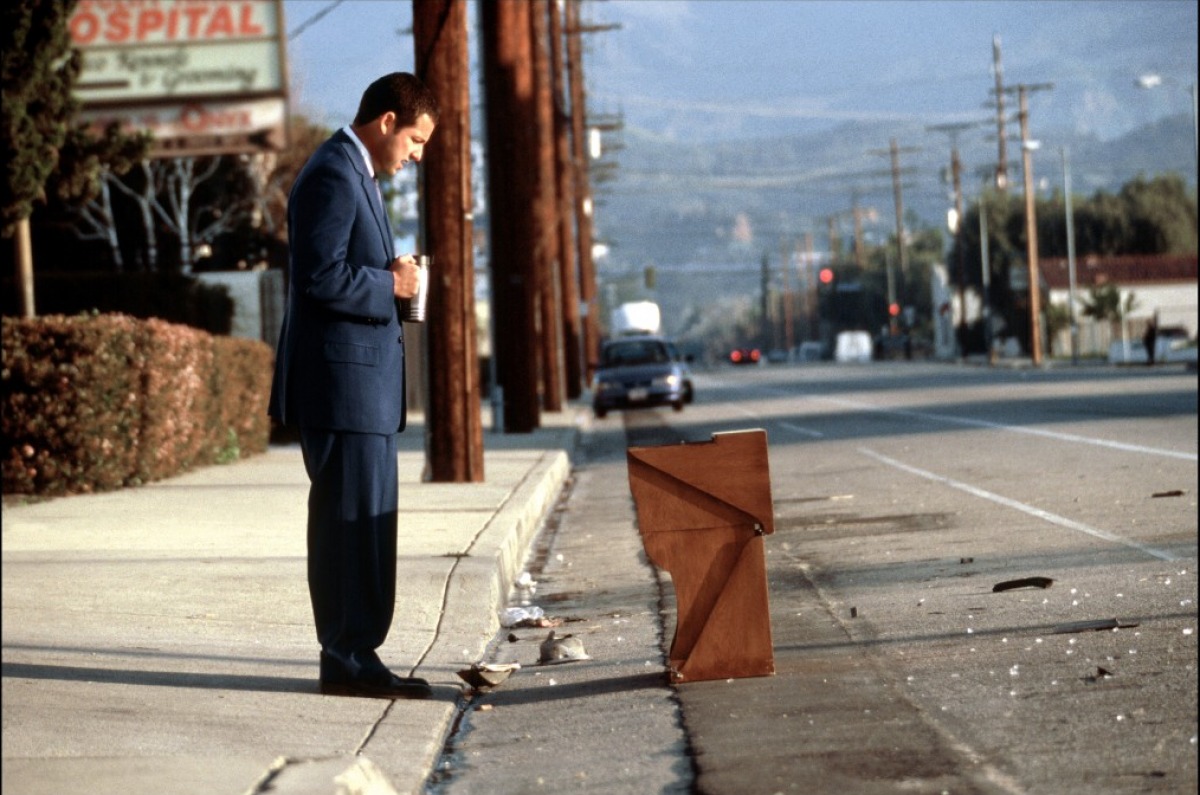
Criterion Collection
Follow Matt Prigge on Twitter @mattprigge










